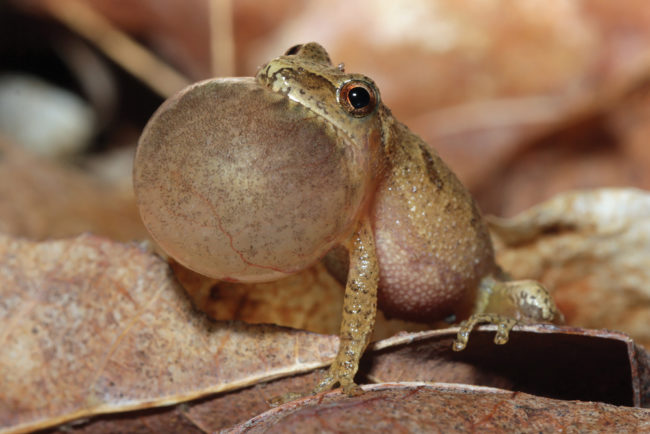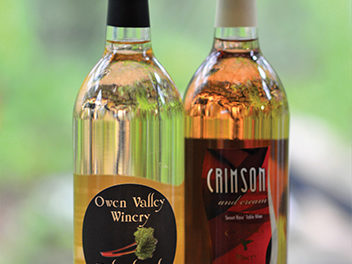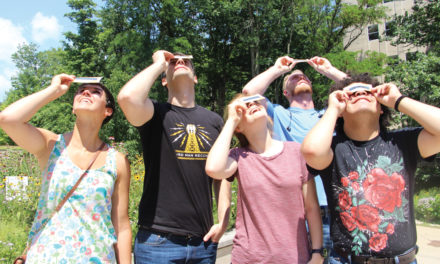
BY SUSAN M. BRACKNEY
Because I’m too cheap to spring for Netflix, Bloomington’s woods and wetlands are my entertainment of choice. I binge-watch barred owls the way other people double-down on Breaking Bad. My “sofa” is a damp, mossy log.
Lately, I’ve become glued to another series of creatures. From spring peepers and bullfrogs to the eastern spadefoot, there are 15 different frogs and toads in our area, and thanks to the Hoosier Upland FrogWatchers—a local chapter of FrogWatch USA—I’m well on my way to becoming an officially certified FrogWatcher, helping to further amphibian research.

Because frogs and toads have permeable skin and eggs, they’re über-sensitive to pollution, pathogens, and other ills. They’re often among the first species to signal trouble, making them especially valuable for environmental studies.
FrogWatch USA is a national program that enlists citizen scientists like me to monitor frogs and toads during their breeding periods (between early February and the end of August.) After recording time, temperature, wind conditions, and types and intensities of calls heard during a three-minute period, I enter my data into a national system that scientists can access to study the effects of climate change, invasive species, habitat loss, environmental pollutants, and more.
The Monroe County Department of Parks and Recreation has been training local FrogWatchers since 2006. Every spring, naturalist Cathy Meyer and assistant naturalist Sandy Belth teach prospective FrogWatchers how to identify the multiple calls of local frogs and toads. Three different calls for each of 15 frogs and toads turns into 45 individual sounds to memorize.
There are mating calls (I’m a male, looking for love.), alarm calls (Yikes! Trouble!), and release calls (Dude! Get off me! I’m a guy!).
Once you understand how many different types of frogs and toads there are—all of them continually interrupting one another—you start to see (or, rather, hear) just how tricky frog-watching can be.
While the gray tree frog and the Cope’s gray tree frog sound nearly identical, the wood frog’s throaty chuckling and the American toad’s shrill whistle are easier to distinguish. But, no matter. I have my spot. I tip-toe out after dark and sit on my “sofa,” waiting for the creatures to settle. I’m ready to binge, and I hope for a frog-filled night.
To sign up for a local FrogWatch workshop with Monroe County Parks and Recreation, to be held February 18–19, visit magbloom.com/frogwatch.










